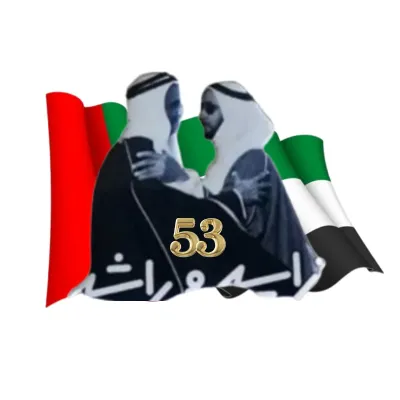Meaning of Colors of Togo’s Flag
What is the Meaning of Colors of Togo’s Flag?

The flag of Togo is a canvas not just of national identity but of deep symbolism and historical significance. Adopted on April 27, 1960, shortly after gaining independence from France, the flag is a banner of freedom, a testament to Togo's past, and a beacon for its future. This article delves into the meaning of the colors of the Togolese flag, exploring their roots, implications, and the message they convey both to the people of Togo and the international community.
Design of the Togolese Flag
Before diving into the colors, it's essential to understand the flag's design. The flag consists of five horizontal stripes that alternate between green and yellow. On the hoist side, there's a red square with a white five-pointed star in the center. The unique arrangement and choice of colors are not merely for aesthetics but carry deep-seated meanings tied to Togo's culture, environment, and aspirations.
Meaning of Colors of Togolese Flag
Green: The Land and Agriculture
The green stripes on the Togolese flag symbolize the country's agriculture and its rich natural resources. Togo is a West African nation with a landscape that varies from the sandy beaches along the Atlantic coast to the lush, green rolling hills in the interior. Agriculture is a cornerstone of the Togolese economy, with a significant portion of the population engaged in farming activities. Crops such as coffee, cocoa, and cotton - vital for the country's export economy - thrive in its fertile soils. The green, therefore, represents this verdant abundance and the government's commitment to nurturing the land, ensuring food security, and promoting sustainable agricultural practices.
Yellow: Mineral Wealth and Hope
The yellow stripes are emblematic of the country's rich mineral resources, particularly phosphate deposits, which are a significant export product. This color also reflects the wealth beneath the earth, a source of prosperity for the nation's future. Moreover, yellow stands for hope and optimism. It represents the dawn of a new day and the bright future that awaits Togo as it harnesses its natural and human resources toward national development and prosperity.
Red: Independence and Sacrifice
The red square in the canton of the flag is deeply symbolic, representing the blood shed by martyrs in the struggle for independence from French colonial rule. It is a poignant reminder of the sacrifices made by Togolese men and women who fought valiantly for the right to self-determination and to govern their destiny. The red is a tribute to their bravery and serves as a continual reminder to future generations of the cost of freedom and the importance of safeguarding their sovereignty.
White: Peace, Purity, and Wisdom
At the center of the red square sits a white five-pointed star, which stands as a symbol of light guiding the people toward peace, purity, and wisdom. The star's white color emphasizes the importance of peace in nation-building and the purity of the country's aspirations toward unity and justice. It also represents the wisdom of Togo's people, reflecting their insight and foresight in navigating the challenges of nationhood and their commitment to principles of democracy and equality.
The Pan-African Influence
The color scheme of the Togolese flag bears a resemblance to the Pan-African colors, which are red, black, and green, with yellow often included as a symbol of wealth. While the Togolese flag does not feature black, the inclusion of green, yellow, and red ties it to a broader African identity and solidarity among African nations. This connection underscores a shared history of colonial struggle, aspirations for unity, and a collective endeavor toward progress and prosperity.
History
The Togolese flag, adopted on April 27, 1960, symbolizes the country's independence from French colonial rule. Its design reflects both Togo's rich cultural heritage and its aspirations for the future. Comprising five horizontal stripes of green and yellow, a red square with a white star in the upper hoist corner, the flag was designed by artist Paul Ahyi, a notable figure in Togolese art and culture. The colors and symbols encapsulate key aspects of Togo's identity: green represents agriculture and nature, yellow signifies mineral wealth and hope, red stands for the blood shed for independence, and the white star symbolizes peace, purity, and wisdom. This design not only marks Togo's sovereignty but also connects it to the broader Pan-African movement, emphasizing unity and solidarity among African nations.
Conclusion
The flag of Togo is a profound emblem of the nation's identity, embodying its struggles, aspirations, and the natural bounty that defines it. Each color on the flag tells a part of the Togolese story, from the green hills and fertile plains to the golden glow of dawn and the blood-red reminder of the price of freedom. The white star guides the nation toward a future marked by peace, wisdom, and unity.
In understanding the symbolism of the Togolese flag, one gains insight not only into the country's past and present but also its hopes for the future. It is a banner under which the people of Togo rally, a source of pride and a reminder of their resilience and unity. As the flag flies high, it conveys a message of optimism and determination, reflecting the spirit of a nation poised to make its mark on the world stage while staying true to its roots and values.
Spotlight on Trending Promo Gear
Browse the most popular and trending Corporate Gifts
Promotional Sports Water Bottles
Promotional Sports Water Bottles
Promotional Sports Water Bottles
Back To School Gifts
Promotional Sports Water Bottles
Promotional Sports Water Bottles
Promotional Sports Water Bottles
Eco Friendly Bottles




















